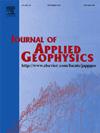基于双物理约束的半监督神经网络的多模态地震阻抗反演
IF 2.1
3区 地球科学
Q2 GEOSCIENCES, MULTIDISCIPLINARY
引用次数: 0
摘要
地震阻抗反演是地震勘探中地下表征的关键过程,通过将地震反射数据转换为阻抗模型,可以深入了解岩石性质。与传统方法相比,数据驱动的深度学习方法具有更好的性能,因此在地震数据处理中得到了广泛的应用。然而,由于连续性差、地震数据的图像同化以及缺乏标记数据等问题,目前的深度学习技术在为地震反演提供动力方面也面临着挑战。为了解决这些限制,我们提出了一种集成多模态注意机制和双重物理约束的半监督地震阻抗反演神经网络。我们的方法利用多模态注意力映射将地震数据转换为多个域,使网络能够捕获不同的特征并提高反演精度。通过结合地震反射数据和测井信息,半监督框架可以有效地从标记和未标记数据中学习。基于波传播和导向滤波机制的双重物理约束进一步引导网络走向物理一致的解,并提高了预测阻抗模型的连续性。综合数据和现场数据的实验结果表明,该方法优于传统的深度学习地震反演技术,提供了更可靠的阻抗模型。这种方法强调了将多模态注意机制和基于物理的约束结合在深度学习反演方法中的潜力,以推进地下成像和资源勘探。本文章由计算机程序翻译,如有差异,请以英文原文为准。
Multi-modal seismic impedance inversion using a semi-supervised neural network with dual physics constraints
Seismic impedance inversion is a crucial process for subsurface characterization in seismic exploration, offering insights into rock properties by converting seismic reflection data into impedance models. Data-driven deep learning methods have been widely applied to seismic data processing since they can provide better performance compared to traditional methods. However, current deep learning techniques also face challenges in powering seismic inversion due to problems such as poor continuity, the image assimilation of seismic data, and the lack of labeled data. To address these limitations, we propose a novel semi-supervised seismic impedance inversion neural network by integrating multi-modal attention mechanisms and dual physics constraints. Our approach leverages multi-modal attention mapping to transform seismic data into multiple domains, enabling the network to capture different features and improve inversion accuracy. By incorporating both seismic reflection data and well-log information, the semi-supervised framework learns effectively from both labeled and unlabeled data. The dual physics constraints, grounded in wave propagation and guided filtering mechanism, further guide the network towards physically consistent solutions and improve the continuity of the predicted impedance models. Experimental results on synthetic and field data demonstrate that the proposed method outperforms traditional deep learning seismic inversion techniques and provides more reliable impedance models. This approach highlights the potential of combining multi-modal attention mechanisms and physics-based constraints in deep learning inversion methods to advance subsurface imaging and resource exploration.
求助全文
通过发布文献求助,成功后即可免费获取论文全文。
去求助
来源期刊

Journal of Applied Geophysics
地学-地球科学综合
CiteScore
3.60
自引率
10.00%
发文量
274
审稿时长
4 months
期刊介绍:
The Journal of Applied Geophysics with its key objective of responding to pertinent and timely needs, places particular emphasis on methodological developments and innovative applications of geophysical techniques for addressing environmental, engineering, and hydrological problems. Related topical research in exploration geophysics and in soil and rock physics is also covered by the Journal of Applied Geophysics.
 求助内容:
求助内容: 应助结果提醒方式:
应助结果提醒方式:


